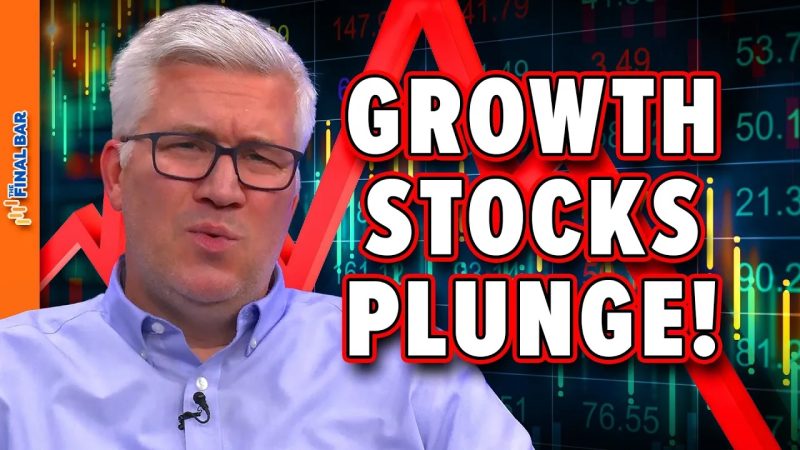The S&P 500 Index, a premier gauge of the U.S. equity market and a crucial bellwether of overall economic health, recently caused ripples in the market as it broke a key trendline. This break has in turn led to a plunge in growth stocks, creating a significant impact on investors and market trends.
A trendline is a critical technical analysis tool used by traders to identify market trends and predict future price levels. It is a sloping line that connects at least two prominent price points – generally swing highs or swing lows. When prices consistently stay above the trendline during an uptrend or below the trendline during a downtrend, the trendline acts as a line of support or resistance, respectively. However, a break in the trendline usually signals a possible shift in trend.
The S&P 500 Index, composed of five hundred of the largest and most significant publicly-traded companies in the U.S, has demonstrated an impressive performance over the previous years, with prices steadily climbing and providing investors with robust returns. However, this rate of increased value in the index has begun to falter, and the recent break in its primary trendline, coupled with a plunge in growth stocks, is a significant development.
Growth stocks, championed for their potential to outperform the market, are shares in companies that are expected to grow at an above-average rate compared to other companies in the market. These shares have historically been the driving force behind the S&P 500’s bull market. Still, the recent downturn marks a significant shift that has left many market stakeholders startled.
Several factors are currently contributing to this shift in market sentiment. Rising interest rates could be a pivotal factor. When interest rates rise, the cost of borrowing increases, creating a potentially stifling environment for growth stocks that rely heavily on borrowed funds. Furthermore, increasing inflation has led to a ‘risk-off’ sentiment among investors, causing a shift towards value stocks seen as a safer investment during turbulent times.
Another factor contributing to this trend could be the reach of tech sector valuations. With the market dominated by a handful of tech giants, their sky-high valuations have led to concerns about a potential bubble. Similarly, significant geopolitical tensions and uncertainties about economic growth could dampen the appeal of growth stocks.
Market watchers are keeping a close eye on this trend, considering the impact it may have on the broader market. A continuing plunge might result in a shift of investor sentiment from growth to value stocks, pushing value stocks to outperform the market.
While this shift has been startling for growth-focused investors, it’s important to remember that these market trends are cyclical. Although growth stocks are facing headwinds at present, historically, they have had the capacity to bounce back dramatically when market conditions change. A keen eye on key indicators, and a well-thought-out diversification strategy, can play an instrumental role in navigating these changing market trends.
In summary, the S&P 500’s break in the key trendline cannot be overlooked, nor can the plunge in growth stocks. It’s a stark reminder that markets are unpredictable and constantly changing, and it reaffirms the importance of careful analysis, preparation, and diversification in investment planning. Whether this market shift will persist or is just a temporary setback will become evident with time. For now, the immediate ramifications have certainly caused a stir in the market.




